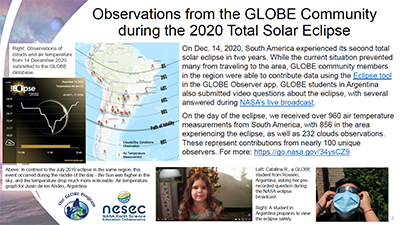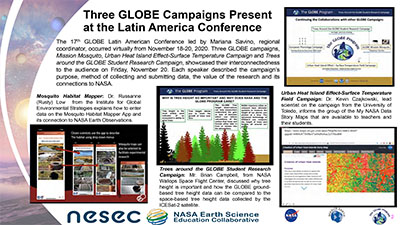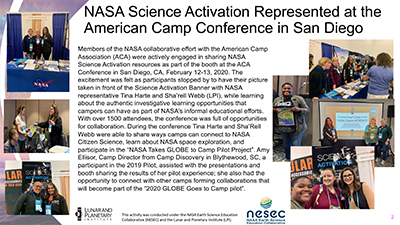NESEC Highlights as reported to the NASA Science Mission Directorate
January 2023
wp_admin2023-01-24T16:39:30-05:00January 19th, 2023|
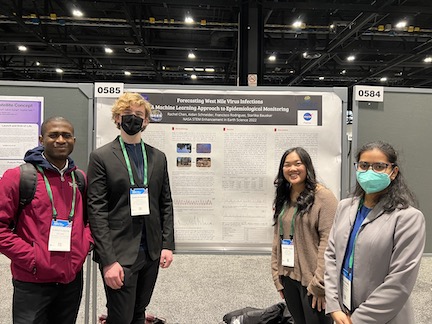
Prachi Ingle and Matteo Kimura were high school research interns with the 2020 STEM Enhancement in Earth Science (SEES) Summer High School Intern Program’s Mosquito Mappers team. In 2021, their work was selected as the Outstanding Student Presentation Award (OSPA) winner for the American Geophysical Union’s (AGU’s) Earth and Space Informatics Division. They were invited to return the following year to present updates to their research in the Union session, “Student Engagement to Enhance Development: Outstanding Student Presentation Award Winners from Fall Meeting 2021.” This research, completed by these two high school students, was evaluated alongside that by undergraduate and graduate students, making this honor even more impressive and exciting.
wp_admin2023-01-13T11:46:26-05:00January 10th, 2023|

Participating in a science symposium can be an overwhelming endeavor for many students. Therefore, on December 12th, 2022, the GLOBE Clouds team conducted a webinar for educators to learn about resources that can be helpful to support students throughout the development of their GLOBE IVSS research projects.
During the webinar, GLOBE Clouds Scientist, Marilé Colón Robles, and Outreach Coordinator, Rosalba Giarratano, talked about the most recent GLOBE Clouds Student Support web page updates, including fresh ideas to engage students in interesting and relevant student projects. They also shared about several resources that can help students develop a good research question, conduct their literature review, interpret their data, and create their research poster. The webinar was conducted both in English and in Spanish, and the recording is available on Marilé Colón Robles’ GLOBE Program Blog.
wp_admin2023-01-13T11:43:23-05:00January 9th, 2023|

Several members of the NASA Science Activation (SciAct) community have been interviewed as part of the StoryCorps American Geophysical Union (AGU) Narratives. AGU is an international, nonprofit scientific association whose mission is to promote discovery in Earth and space science for the benefit of humanity. Beginning in 2019 – in celebration of its centennial – AGU invites the Earth and space science community to record their personal histories as part of their AGU Narratives. StoryCorps interviews are preserved at the American Folklife Center at the Library of Congress in Washington, D.C. and available through the StoryCorps app and online.
December 2022
wp_admin2023-01-13T11:40:49-05:00December 16th, 2022|
![eClips_Picture_SDC_LandDetectives[1]](https://nesec.strategies.org/wp-content/uploads/2023/01/eClips_Picture_SDC_LandDetectives1.jpg)
NASA eClips has partnered with the Global Learning & Observations to Benefit the Environment (GLOBE) Observer team (part of NASA’s Earth Science Education Collaborative, NESEC) to co-develop and promote the newest NASA Spotlite Challenge: Land Detectives. As NASA Land Detectives, participants are challenged to gather and share evidence to confront misconceptions about Earth’s land cover. Land cover is what is on Earth’s surface, such as trees, grass, pavement, and buildings.
October 2022
wp_admin2023-01-13T11:37:06-05:00October 31st, 2022|

NASA eClips™ has added two new videos to its Ask SME (Subject Matter Expert) resource collection – a collection of videos that gives viewers the educational opportunity to virtually meet featured NASA SMEs. The Ask SME videos provide a behind-the-scenes glimpse of the SMEs’ personal interests and career journeys while describing their real-world connections and experiences in order to help viewers visualize pathways to STEM careers.
To inspire an even larger audience, NASA eClips also created and released three Spanish-language “Ask SME: Close-up with a NASA Subject Matter Expert” videos featuring Marilé Colón Robles, Jessica Taylor, and Dr. Begoña Vila. These career-connection videos capture a glimpse of each SME’s personal interests and their unique career journeys.
Marilé Colón Robles, Project Scientist at NASA’s Langley Research Center, shares her love for studying clouds and working with people from around the world to collect data about clouds. Jessica Taylor, Physical Scientist at NASA’s Langley Research Center, describes her role in developing and bringing NASA Earth Science data to the public, educators, and learners in fun and engaging ways. She shares how her love of meteorology and lightning sparked her interest in becoming a scientist and set her career path. Dr. Begoña Vila, Instrument Systems Engineer for the Webb Space Telescope at NASA’s Goddard Space Flight Center, describes her role in supporting the operations of the Webb telescope. She also shares her love for reading, yoga, and exploring the outdoors. She highlights her interest in both science and art and her belief that humans share the need to explore and continuously learn. Check out these amazing Ask SME videos and more on the NASA eClips website.
September 2022
wp_admin2023-01-13T11:30:49-05:00September 16th, 2022|

NASA GLOBE (Global Learning and Observations to Benefit the Environment) Observer citizen scientists contributed data for two recent articles featured in Insect’s Special Issue, Citizen Science Approaches to Vector Surveillance. This Special Issue featured research applying citizen science approaches to mosquito vector surveillance, including the use of targeted citizen science projects, smartphone apps, social media, online databases, and other passive surveillance methods for the collection of vector data.
wp_admin2023-01-13T11:30:10-05:00September 15th, 2022|

Citizen science data are often described as being of use to science, but examples of citizen science data featured in research are rare. Here, an image from the summer 2021 GLOBE (Global Learning and Observations to Benefit the Environment) Observer Mosquito Habitat Photo Challenge was selected by the Medical Research Council’s London Institute of Medical Sciences to be the “Biomedical Picture of the Day”. The photo was featured in a recent publication that described how citizen science data from three different citizen science projects were made interoperable in order to track invasive diseases globally (Carney et al., 2022). The citizen science projects included in the paper were GLOBE Observer Mosquito Habitat Mapper, Mosquito Alert, and iNaturalist. Dr. Russanne Low, science lead for the Mosquito Habitat Mapper, coauthored the article. The image was prepared by Kristen Weaver from the GLOBE Observer team.
The “Biomedical Picture of the Day” website aims to engage everyone, young and old, in the wonders of biomedicine. Images are kindly provided for inclusion on this website through the generosity of scientists across the globe. Check out this awesome Mosquito Monitoring feature and more: http://www.bpod.mrc.ac.uk/archive/2022/9/2
August 2022
wp_admin2022-08-31T12:01:55-05:00August 25th, 2022|

115 people from 41 countries logged on to the two-hour event (285 registered and received the recording later), participating from their time zone – which meant logging on anywhere from the earliest morning hours to very late at night. The event included a welcome from The GLOBE Program director, Dr. Tony Murphy, and NASA Program Manager, Dr. Allison Leidner, GLOBE Observer trivia, a volunteer panel, seven breakout spaces for small group conversations, science highlights reporting how GLOBE Observer data are used, and a question-and-answer session. Read more…
wp_admin2022-08-31T12:05:14-05:00August 23rd, 2022|

Over 200 teachers and students from nine countries participated in the August 2-5, 2022, GLOBE (Global Learning Observations to Benefit the Environment) Regional Learning Expedition (GRLE) in Käsmu, Estonia. NASA Earth Science Education Collaborative (NESEC) team members from Goddard Space Flight Center/Wallops Flight Facility (Brian Campbell) and Jet Propulsion Laboratory (Peter Falcon) led 4- and 5-hour field experiences and sessions for teachers and students Read more…
wp_admin2022-08-31T11:58:32-05:00August 22nd, 2022|

Thanks to tree height data collected by 9th-grade algebra students (from Monsignor McClancy Memorial High School 9th grade algebra students in Queens, New York) participating in the Global Learning and Observations to Benefit the Environment (GLOBE) Program, a new peer-reviewed paper is showcasing the accuracy of citizen scientist observations of tree height. Read more…
June 2022
wp_admin2022-08-31T12:07:35-05:00June 22nd, 2022|

Students, educators, and citizen scientists from over 1,000 locations in over 26 countries participated in the Spring 2022 Trees Around the GLOBE Student Research Campaign. During this Intensive Observation Period (IOP), which ran from Earth Day (April 22) to May 22 (International Biodiversity Day), participants contributed almost 3,000 observations of tree height and land cover. Read more…
May 2022
wp_admin2022-08-31T11:53:46-05:00May 19th, 2022|

The Chesapeake Bay Foundation’s Keystone 10 (K10) Million Trees Partnership is a collaborative effort in Pennsylvania by national, regional, state, and local agencies, conservation organizations, outdoors enthusiasts, businesses, and citizens committed to improving Pennsylvania’s communities, economy, and ecology. K10 is currently using the Global Learning and Observations to benefit the Environment Program (GLOBE) Observer App Trees Tool to take tree height and diameter measurements as an indicator of tree health. Read more…
wp_admin2022-08-31T12:10:39-05:00May 5th, 2022|

On April 19, Dr. Rusty Low, part of NASA Science Activation’s Earth Science Education Collaborative (NESEC) from the Institute for Global Environmental Strategies, presented the GLOBE Observer Mosquito Habitat Mapper as part of Los Angeles Public Library Neighborhood Science Tuesdays (NeiSciTuesdays) webinar. Read more…
wp_admin2022-08-31T12:13:49-05:00May 4th, 2022|

To support Girl Scout leaders that want to engage their troops in NASA Earth science through citizen science, the NASA Science Activation program’s Earth Science Education Collaborative (NESEC) has released a Girl Scout Guide for using the GLOBE Observer app. This new guide features a case study and videos that walk Girl Scout leaders through the process of doing GLOBE citizen science to complete the Think Like a Citizen Scientist Journey. Read more…
April 2022
wp_admin2022-08-31T12:19:15-05:00April 5th, 2022|

The NASA GLOBE Cloud Challenge 2022: Clouds in a Changing Climate, held from January 15th to February 15th, asked citizen scientists around the world to submit cloud observations through The GLOBE Program, which allows citizen scientists to submit observations through the GLOBE Observer app and allows other volunteers to participate as well, by classifying cloud types in sky photographs taken by GLOBE participants through the NASA GLOBE CLOUD GAZE project on the Zooniverse platform. Read more…
March 2022
wp_admin2022-08-31T12:22:24-05:00March 23rd, 2022|

On February 3rd, 2022, more than 50 students from Delta Junction, Alaska, had these and many more insightful questions to ask Dr. Russanne Low from the Institute for Global Environmental Strategies (IGES) and science lead for the GLOBE Observer Mosquito Habitat Mapper. These students’ classes have been preparing for their upcoming fieldwork and research using The GLOBE Program’s GLOBE Observer app, and these virtual “Meet the Scientist” events, hosted by NASA Education Specialist, Bonnie Murray, help them do just that. Read more…
January 2022
wp_admin2022-08-31T12:27:20-05:00January 31st, 2022|

Former NASA STEM Enhancement in Earth Science (SEES) intern, 17-year-old Aseel Rawashdeh, recently received top honors in the Regeneron Science Talent Search 2022, the nation’s oldest and most prestigious science and math competition for high school seniors. Rawashdeh will receive an $80,000 award for developing an inexpensive way to kill the larvae of mosquitos that spread viral illnesses. Read more…
November 2021
wp_admin2021-12-10T10:58:56-05:00November 19th, 2021|

Two prominent science news organizations featured GLOBE Observer citizen science in the past month. On October 29, the American Geophysical Union’s (AGU) EOS news highlighted GLOBE Mosquito Habitat Mapper in an article titled “App Tracks Harmful Mosquitos with Help from Crowdsourced Science.” The article is a summary of a peer-reviewed publication published in GeoHealth in August 2021 (GeoHealth, https://doi.org/10.1029/2021GH000436, 2021).
On November 18, Discover Magazine published an article called “Four Ways (in One App) to Help NASA Study the Changing Planet.” This article is a high-level summary of how citizen scientists can support NASA science by using the GLOBE Observer app to collect observations of clouds, land cover, mosquito habitats, and trees. The article originally appeared on the SciStarter website and was republished by Discover.
wp_admin2021-12-10T10:16:50-05:00November 18th, 2021|
On November 18, 2021, NESEC team members Dr. Russanne Low, Peder Nelson, Cassie Soeffing, Andrew Clark and the 2020 cohort of SEES Mosquito Mappers Research Team published a new peer-reviewed article in Frontiers in Climate, Adopt a Pixel 3 km: A Multiscale Data Set Linking Remotely Sensed Land Cover Imagery with Field Based Citizen Science Observation. This data report documents Adopt a Pixel 3 km, a method for systematically collecting GLOBE Land Cover and Mosquito Habitat data with the GLOBE Observer app and classifying correlating high resolution satellite imagery. It documents data collected and analyses done by 74 high school research interns participating in the STEM Enhancement in Earth Sciences summer research experience. Read the paper: Low, R.D., Nelson, P.V., Soeffing, C., Clark, A., SEES 2020 Mosquito Mappers Research Team. (2021) Adopt a Pixel 3 km: A Multiscale Data Set Linking Remotely Sensed Land Cover Imagery with Field Based Citizen Science Observation. Frontiers in Climate, 18. https://doi.org/10.3389/fclim.2021.658063
September 2021
wp_admin2021-09-28T12:04:56-05:00September 28th, 2021|

wp_admin2021-09-28T09:14:36-05:00September 28th, 2021|

The 2021 Earth System Explorers virtual internship connected 96 high school interns with the exciting science of applying NASA Earth observations to the global health threat of mosquito vector-borne diseases. The project engaged participants in 120 to 150 hours of research and an opportunity to work closely with NASA SME mentors. Spread over 8 weeks @ approximately 15 hrs/week this flexible internship accommodated summer jobs and family responsibilities. Participants experienced field research, using remotely sensed data, computer science, and data analysis while contributing to the scientific understanding of mosquito ecology, human health, and land cover classification. Interns accessed and analyzed data using online tools such as the GLOBE Advanced Data Access Tool, Collect Earth Online, AppEARS, NASA Worldview, Climate Engine, Google Earth Engine, and ArcGIS Online. Data products and research outcomes resulting from the Earth System Explorers team will be the basis of a co-authored peer-reviewed research paper, an individual or team poster submission to AGU Bright STaRS, and student research projects submitted to the 2022 GLOBE International Virtual Science Symposium (IVSS). The SEES Earth System Explorers internship is led by the NASA Earth Science Education Collaboration in collaboration with the University of Texas Space Grant SEES Internship.
wp_admin2021-09-28T12:21:20-05:00September 27th, 2021|

wp_admin2021-09-28T12:17:55-05:00September 27th, 2021|

wp_admin2021-09-28T12:14:31-05:00September 27th, 2021|

wp_admin2021-09-28T12:10:41-05:00September 27th, 2021|

August 2021
wp_admin2021-09-28T09:05:53-05:00August 12th, 2021|
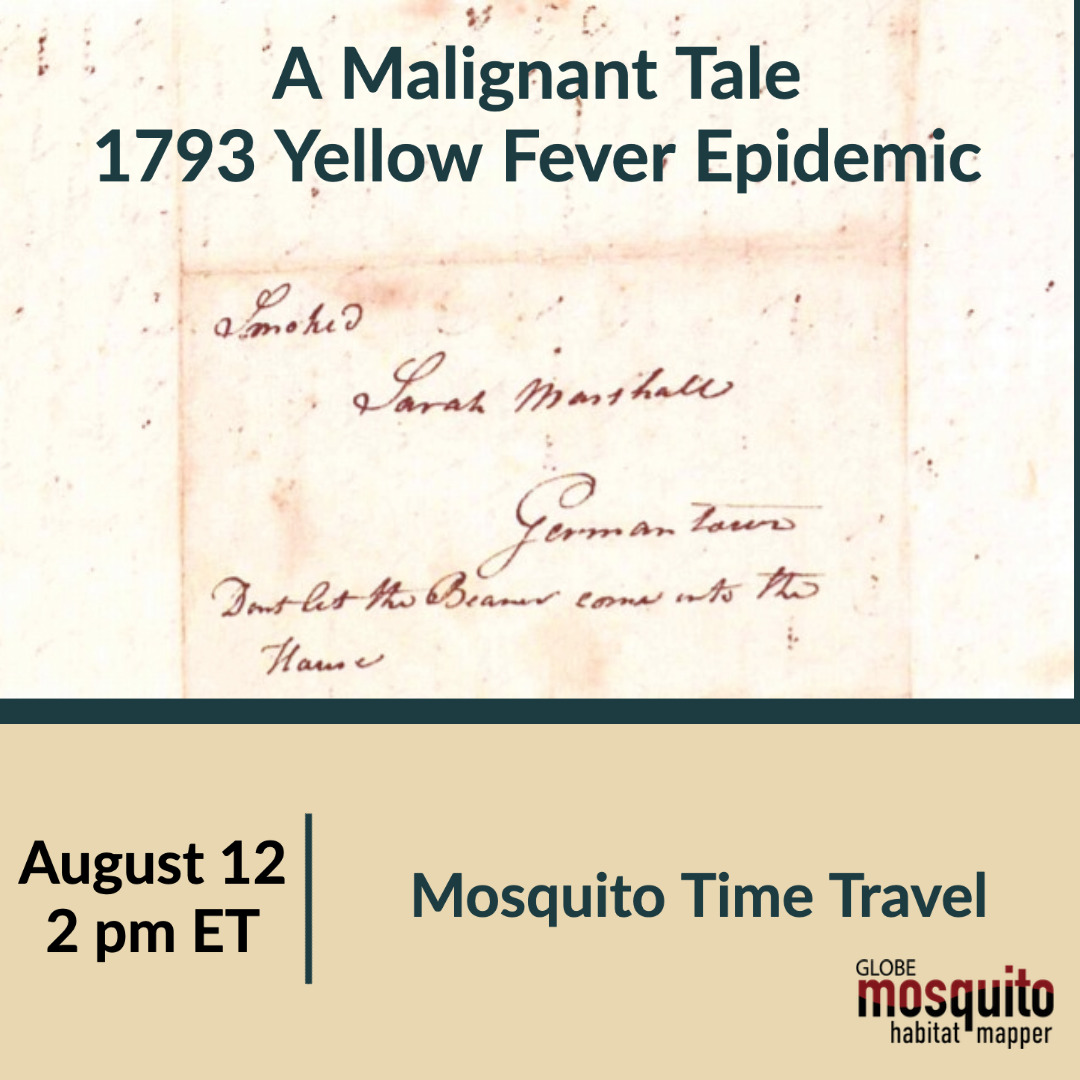
July 2021
wp_admin2021-08-16T08:19:47-05:00July 16th, 2021|

The NASA Earth Science Education Collaborative (NESEC) team supported the GLOBE Annual Meeting with 6 hour-long training sessions (Introduction to the GLOBE Observer app, and protocols including Clouds, Tree Height, Land Cover, and Mosquito Habitat Mapper); 7 community sessions (12 minutes each plus Q&A), 2 workshops, 5 posters, participation in the education working group, and moderating 3 GLOBE networking sessions. For one community session on welcoming new partners to GLOBE, the NESEC team created a video of interviews with out-of-school partners who talked about why they participate in GLOBE and how they are implementing GLOBE in a camp, National Park, public library, with families and as lifelong learners. Student Showcase presentations included presentations of research projects mentored by NESEC team members.
May 2021
wp_admin2021-06-09T12:55:11-05:00May 22nd, 2021|

On May 21 and 22, the NESEC-led GLOBE Observer team provided strong support to NASA’s inaugural citizen science event, CitSciCon. Five team members and three GLOBE Observer volunteer participants presented in five sessions (NASA Citizen Science@My School; CitSci Lifelong Learning; NASA Citizen Science Near You; What comes after participation in a NASA citizen science project; Leading Discovery, Volunteers in their own Voices). GLOBE Observer was also a component of a partner presentation on the Fresh Eyes on River Ice project, which uses the GLOBE Observer app to monitor river ice, and Greatest Hits of NASA CitSci Discoveries. The GLOBE Observer team supported the event planning and promoted the event heavily through the GLOBE Program’s Facebook and Twitter accounts and the GLOBE Observer website. 5,000 people registered for the event, and 2,200 unique IP addresses tuned in. The event recordings are archived on the SciStarter YouTube channel.
April 2021
wp_admin2021-05-06T11:31:09-05:00April 22nd, 2021|

On April 22, 2021, GLOBE Observer published a peer-reviewed paper, “GLOBE Observer and the GO on a Trail Data Challenge: A Citizen Science Approach to Generating a Global Land Cover Land Use Reference Dataset” in Frontiers in Climate. The paper defines GLOBE Observer land cover data collection and quality assurance methods. Authors include members of the NESEC GLOBE Observer team, partners at the National Park Service and Geoscience Australia, and volunteer participants who collected significant amounts of data during the 2019 GO on a Trail data challenge.
wp_admin2021-05-19T14:19:14-05:00April 16th, 2021|

The NASA GLOBE Clouds team is working with NASA scientist Dr. Bill Smith, LaRC, to use GLOBE Cloud observations made by NASA interns to solve the terminator problem. The Solar Terminator or twilight zone is that line that separates the daylit side of a planet from the dark night side and can be a challenge for satellite algorithms to detect. From March 15 – April 16 Angela Rizzi, LaRC, and Marilé Colón Robles, LaRC, facilitated the Solar Terminator Intern Cloud Challenge. The challenge engaged interns across NASA in making “terminator” cloud observations using the GLOBE Observer app. These observations were made up to an hour after sunrise and within the hour before sunset. The Solar Terminator data will be used this summer by Dr. Smith and a NASA intern to try to improve cloud detection algorithms. Information about the related science was provided in five blogs. In addition, there was a closing webinar, Stay Connected to NASA through Citizen Science, which featured Jessica Taylor, LaRC, and Marc Kushner, HQ. The intern team collected over 200 observations including 157 terminator observations.
wp_admin2021-04-19T11:16:44-05:00April 16th, 2021|
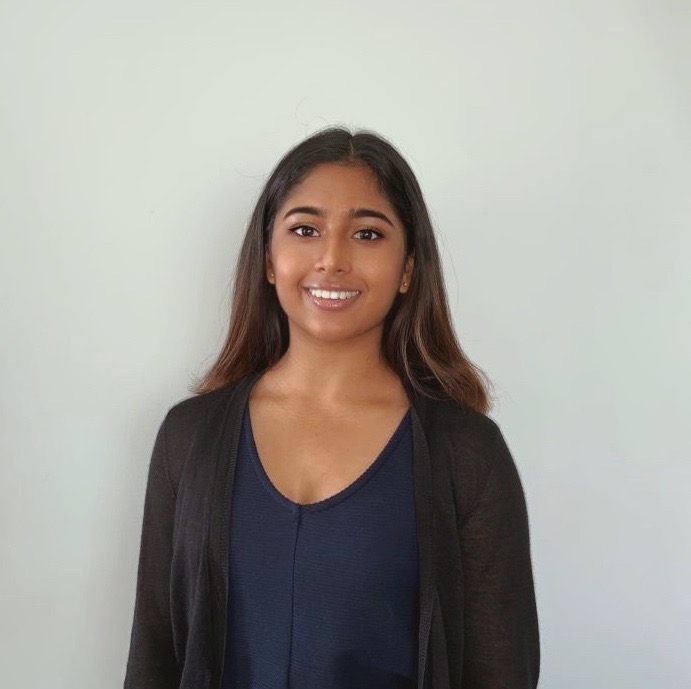
A research paper has been published in the Journal of Emerging Investigators by a student who participated in the summer 2020 Mosquito Mappers Virtual Internship cohort. Dr. Rusty Low, Institute for Global Environmental Strategies (IGES), led this project. The Virtual Mosquito Mappers were part of the 2020 STEM Enhancement in Earth Science program. High school student Kavita Kar’s paper titled The Effect of Poverty on Mosquito-borne Illness Across the United States seeks to determine the characteristics that make some communities more susceptible to diseases than others. Kar hypothesized that low-income communities are more vulnerable to mosquito-borne diseases. To test this hypothesis, she identified and studied characteristics that make communities susceptible to mosquito-borne diseases, including water in square miles, average temperature, population, population density, and poverty rates per county. Kar used regression analysis to understand the relationship between the above variables and the total number of mosquito-borne disease cases.
wp_admin2021-04-23T13:55:29-05:00April 6th, 2021|

Girl Scouts of the USA partnered with SciStarter to help girl scouts around the country complete their “Take Action for the Planet” projects focused on our climate. The GLOBE Observer app is one of four platforms recommended for participants to gather environmental observations. Four virtual sessions were organized to lead participants through their project development. The first session featured NASA GLOBE Clouds science lead, Marilé Colón Robles, as one of three guest speakers. Marilé presented to over 600 girl scouts about clouds and satellite comparisons to Terra, Aqua, CALIPSO, and geostationary satellites. The session was a way to inspire girl scouts to study science, technology, engineering, and mathematics (STEM) through the opportunity to interact with female scientist role models.
wp_admin2021-05-19T14:15:02-05:00April 6th, 2021|
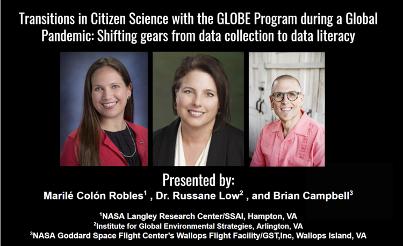
Marile Colon Robles (NASA Langley Research Center), Dr. Russanne Low, (Institute for Global Environmental Strategies) and Brian Campbell (NASA Goddard Space Flight Center) co-presented, “Transitions in Citizen Science with the GLOBE Program during a Global Pandemic: Shifting Gears from Data Collection to Data Literacy” at the 2021 American Philosophical Society’s “The Promise and Pitfalls of Citizen Science Symposium.” The presentation featured a discussion on the NASA GLOBE Observer app for citizen science, highlighting the comparison of the space-based and ground-based observations, focusing on the four protocol observations (Clouds, Mosquito Habitats, Land Cover, and Trees) and the lessons learned in citizen science during the COVID-19 pandemic.
This symposium, according to the American Philosophical Society, “…reflects the work of Benjamin Franklin and others who lacked formal training and whose work sometimes went unacknowledged but whose contributions significantly added to the advancement of knowledge. It hopes to expand upon the theme of the exhibition by exploring understandings of citizen science over time, placing historical initiatives in conversation with present day projects as well as reflecting on the future needs and opportunities of the movement.”
wp_admin2021-04-23T13:58:37-05:00April 2nd, 2021|

Dr. Russanne Low, science lead for GLOBE Observer Mosquito Habitat Mapper, conducted two online sessions (March 24 and April 2) as part of the Malaria Vector Surveillance Workshop, led by the U.S. President’s Malaria Initiative VectorLink Ethiopia Project. 50 Ethiopian mosquito health professionals completed the virtual training, offered as part of two 8-day workshops held in Addis Ababa. The Mosquito Habitat Mapper and Land Cover tools in the GLOBE Observer app provide the capability for the professionals to collect and archive field data necessary to conduct surveillance identifying Anopheles stephensi, a new invasive malaria vector in Africa. This mosquito distinguishes itself from other malaria vectors because it is the first one identified in Africa that uses manufactured containers as breeding sites. As a result, new mosquito surveillance and mitigation strategies are needed by public health units, and GLOBE Observer is one tool being employed. NSF-funded research collaborators from University of South Florida (NSF Grant #2014547) are providing 200 clip-on microscopes for use with the Mosquito Habitat Mapper data collection to workshop participants.
February 2021
wp_admin2021-02-09T09:25:19-05:00February 5th, 2021|
January 2021
wp_admin2021-01-11T12:00:13-05:00January 8th, 2021|
November 2020
wp_admin2020-12-03T09:57:17-05:00November 30th, 2020|
wp_admin2022-03-22T13:29:46-05:00November 19th, 2020|

September 2020
wp_admin2022-03-22T13:24:00-05:00September 28th, 2020|
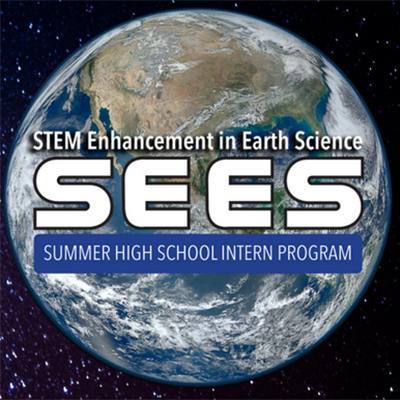
During summer 2020, NESEC partnered with the Texas Space Grant Consortium at the University of Texas, Austin, to offer a safe virtual summer internship experience for 114 rising high school juniors and seniors from 22 states, PR, and APO (Germany).
wp_admin2021-02-09T09:25:57-05:00September 23rd, 2020|
wp_admin2020-09-21T15:54:29-05:00September 16th, 2020|
wp_admin2020-09-21T15:59:09-05:00September 3rd, 2020|
August 2020
wp_admin2020-09-15T17:28:38-05:00August 31st, 2020|
wp_admin2022-03-22T13:27:59-05:00August 31st, 2020|
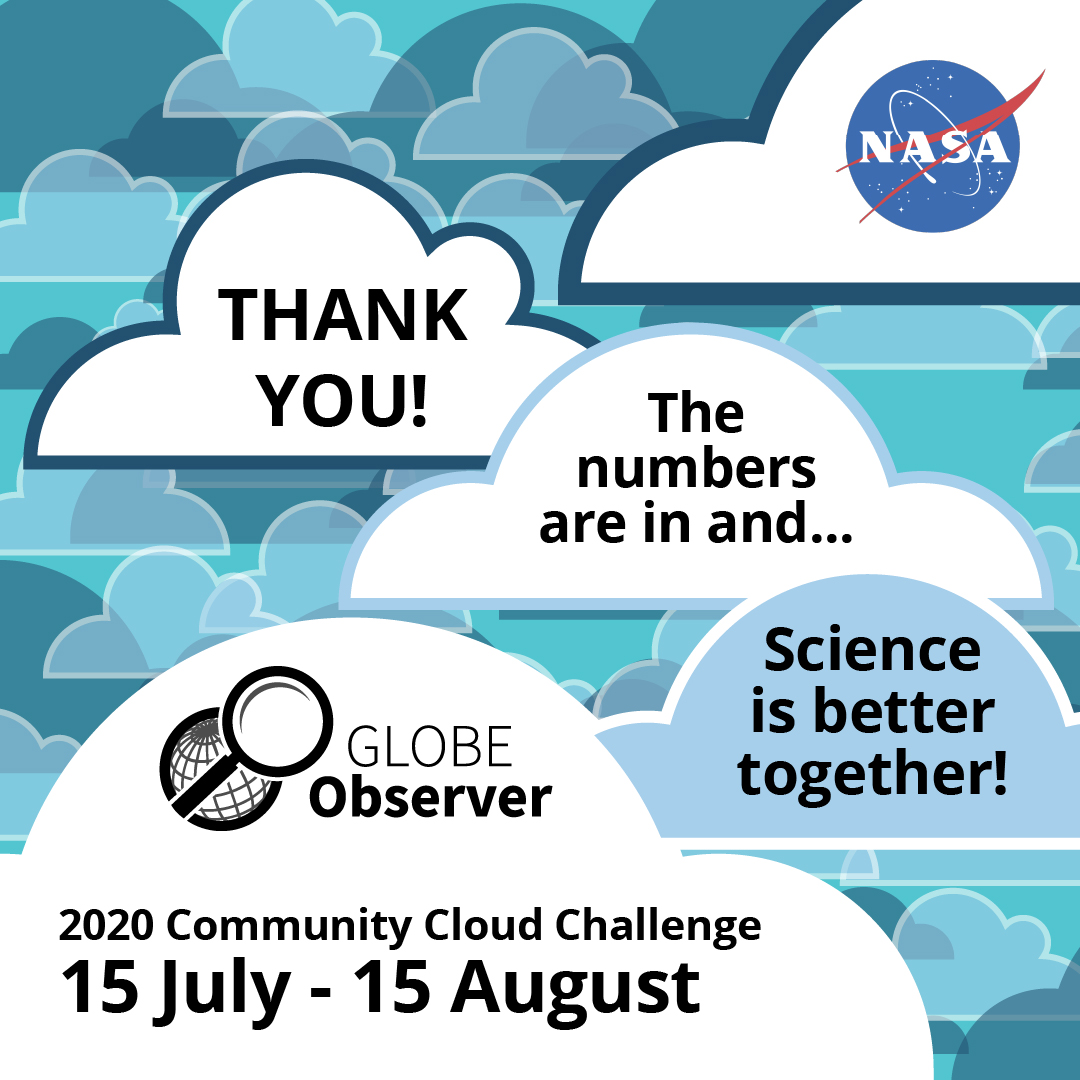
In the four weeks of the challenge, our GLOBE citizen science community had the opportunity to learn how eight different NASA scientists study clouds to better understand our atmosphere and the important role citizen science observations play in that. Our citizen scientists also had the chance to learn about cloud-related activities from six different GLOBE educators.
wp_admin2020-09-15T17:08:48-05:00August 25th, 2020|
wp_admin2020-09-21T15:56:59-05:00August 25th, 2020|
wp_admin2020-09-15T17:30:41-05:00August 24th, 2020|
July 2020
wp_admin2020-09-15T17:24:21-05:00July 20th, 2020|
June 2020
wp_admin2020-09-15T17:22:17-05:00June 17th, 2020|
wp_admin2020-09-15T17:20:22-05:00June 9th, 2020|
wp_admin2020-09-15T17:25:25-05:00June 8th, 2020|
April 2020
wp_admin2020-09-15T17:16:49-05:00April 28th, 2020|
wp_admin2020-09-15T17:26:04-05:00April 24th, 2020|
wp_admin2020-09-15T16:57:31-05:00April 24th, 2020|
wp_admin2020-09-15T17:12:32-05:00April 23rd, 2020|
wp_admin2020-09-15T16:57:57-05:00April 9th, 2020|
wp_admin2020-09-15T17:09:24-05:00April 8th, 2020|
February 2020
wp_admin2020-09-15T17:10:05-05:00February 21st, 2020|
January 2020
wp_admin2020-09-15T16:50:19-05:00January 15th, 2020|
December 2019
wp_admin2020-09-15T17:32:58-05:00December 31st, 2019|
wp_admin2022-03-22T13:18:50-05:00December 20th, 2019|

This story map shares the results of the citizen science data collection and mapping campaign.
November 2019
wp_admin2022-03-22T13:15:19-05:00November 13th, 2019|

- Trees Around the GLOBE Student Research Campaign
- GLOBE Mission Mosquito
- SEES Mosquito Mappers Virtual Internship
- Student Interns at NASA Centers
- Girl Scouts Citizen Science Journey
- NASA GLOBE Clouds
- Contrails Jr. Research Teams
- U.S. Air Quality Student Research Campaign


